What is wart? We will analyze the causes, diagnosis and treatment methods in an article by a dermatologist with 37 years of experience.
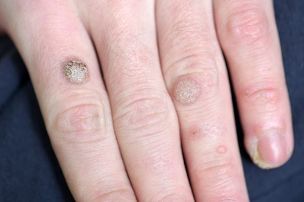
Disease definition. Causes of the disease
Warts are irregular, benign light skin lesions in the form of localized overgrowth of the upper layer of skin (nodules) with nodules or plaques.
The incidence of warts in adults is 7-12%, in school-age children - up to 10-20%.
Warts are very similar to other skin growths. Usually, a person can not accurately diagnose the disease on their own, so you should consult a dermatologist to make a diagnosis.
The human papillomavirus is the cause of warts. The type of virus affects the type of warts that can develop. Thus, each type of human papillomavirus infects tissue in its most characteristic localization.| Type HPV | Preferred localization |
Types of warts |
|---|---|---|
| 1 | Feet, knees, palms, hands, toes |
Plantar warts and palms, rarely simple warts |
| 2, 4 | Hands, fingers, knees, less often - feet |
Simple warts, occasional soles, palm and mosaic warts |
| 3, 10 | Shins, hands, face | Flat warts |
| 7 | Hands, fingers | Butchers warts |
| 5, 8, 9, 12, 14, 15, 17, 19-24 |
Face, arms, front torso |
Verruciform epidermodysplasia |
Virus infection usually occurs through contact - by direct contact between infected and healthy skin (for example, when shaking hands) or indirectly (through handkerchiefs, toys, etc. ). Therefore, you can become infected with the human papillomavirus, which causes warts, in a wide variety of places - on public transport, at school, at work, at home, in places with high contact and humid environment (swimming pools, saunas, gyms). ). A small wound on the skin, through which viruses enter, as well as inflammation of the skin, contribute to the infection.
Also contributes to the appearance of warts:
- immunodeficiencies (including HIV infection),
- warm and humid environment,
- the need for professional contact with meat and fish ("butcher warts").
Some types of human papillomavirus are transmitted by parents.
But toads and frogs, despite the horror stories we fear so often in childhood, cannot be infected - this is one of the most popular myths about this disease, which has no basis.If you notice similar symptoms, consult your doctor. Do not self-medicate - it is dangerous to your health!
Symptoms of warts
Symptoms will vary depending on the type of wart.
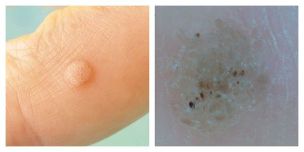
Common ant:
- Round dense nipple of normal color, 1-10 mm and larger.
- The surface of the papilla is covered with cracks, layers.
- If the papule is on the finger, then the print disappears and is distorted. The same goes for the palm design.
- Simple warts are found either individually or in multiple pieces - usually occurring in areas with greater injury (hands, fingers, knees).
- When viewed with a dermatoscope, the doctor may see small brown dots - clotted capillaries. Patients often refer to these points as "roots". This is the main sign of a doctor: it can be used by a dermatologist to distinguish a wart from other similar diseases (for example, molluscum contagiosum and keratoma).
Plantar (corneal) warts:
Flat (youthful) warts: Epidermodysplasia verruciform (senile ant): When it enters the body, the human papillomavirus can be dormant for a long time - a person usually does not even know it exists. When favorable factors for the virus appear, it begins to "multiply" in the epithelium, leading to tissue changes.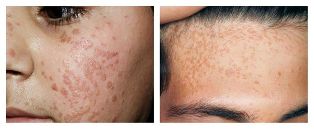
Pathogenesis of warts
Local factors and the state of the immune system affect the spread of the infection. For example, people with HIV infection or a kidney transplant are more likely to develop warts. In addition, these tumors are often difficult to treat. With normal immunity, the virus does not affect the deeper layers of the skin, so many people become infected on their own after a few months.
The main stage of the appearance of warts is the acceleration of the rate of cell division and growth with the help of the virus. This rapid metabolism leads to thickening of the skin layers. As the tissues grow in a specific, small area, a tuberculosis, called a wart, occurs.Classification and developmental stages of the wart
There is no generally accepted classification of warts. However, there are many common varieties:
- The common wartis the most common type (70% of warts are just that). Such tumors do not become noticeable and only cause aesthetic discomfort to a person.
- Plantar wart- occurs on the soles of the feet, is painful, therefore requires treatment. Skin injury due to uncomfortable, tight, stair shoes contributes to the development of such a wart.
- Flat warts <strongx - most common in young, adolescents. This is due to the unstable hormonal background of young people, which affects the whole body. Usually flat warts are almost invisible.
- Aging warts- typical of the elderly. They often appear on the part of the body covered with clothes, but can appear on the face and hands. If there is no discomfort, such warts should not be treated - healing in the elderly can be much slower than in the young, due to the slow metabolism.
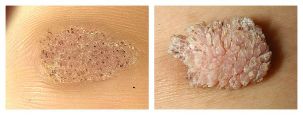
Other authors distinguish much more than these types of warts:
- Mosaic warts <strongx (HPV 2, 4) - neoplasms of the palms and soles of the feet. They look like foci of hyperkeratosis, ie thickening of the stratum corneum (usually on the front of the legs), covered with deep cracks.
- Cystic warts <strongx (HPV 60) is a very rare type of foot tumor. It is a soft knot with cracks. When opening, a white-yellow discharge appears, similar to the curd.
- Warts ants <strong are thin horny areas near the mouth, nose or eyes.
- Butcher Warts <strongx (HPV 7) - occurs on the hands and fingers of people who come in constant contact with meat and fish. It appears as hypertrophic neoplasms similar to cauliflower, but of normal color.
In addition, the types of warts are distinguished according to their location.
Thus, regenerative warts - tumor-like tumors that appear on the genitals (especially where the skin goes to the mucous membrane) is a common disease. They are usually caused by HPV types 6 and 11.
Complications of the wart
The main reason why patients with warts go to the doctor is an aesthetic defect that can affect the patient's quality of life, his self-confidence and develop many complexes. Complications can also include cracks on the wart surface and the addition of infection, and in some types of warts, pain when walking.
Skin warts usually do not degenerate into malignant neoplasms, they are quite harmless, however, in very rare cases, such a complication can occur in people with a suppressed immune system.
Other complications occur when you try to remove the tumors on your own. In this regard, inflammation and cosmetic defects in the form of scars can occur, as well as the further spread of the virus through the skin, due to which, in the morning after the self-removal of a wart, a person can wake up with several new ones. x / p>
Remember that under the guise of a wart, a completely different disease can be hidden, which can not be determined without the advice of an experienced doctor.
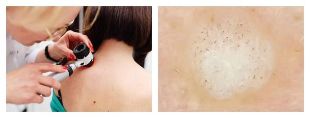
Diagnosis of warts
Usually, an examination (clinical picture) and memory (medical history) are sufficient for the diagnosis.
To confirm the diagnosis, the doctor may perform a histological examination - the study of the tumor cells.
It is very important to make a differential diagnosis - to distinguish warts from other diseases. For example,common wartsshould be distinguished from the following diseases:
- Molluscum contagiosum- occurs more often on the body and genitals, less often on the hands and feet. It is a hemisphere with an impression on the surface, when pressed from the sides, an off-white "gruel" is released.
- Subcutaneous nerve- often solitary, a person has since birth. It rises above the surface of the skin, often covered with hair.
- Basalioma- a tumor in the form of a nodular cylinder, covered with a crust in the center. Typical for the elderly.
Palmar wartsshould be distinguished from the following diseases:
- Keratoderma- large areas of keratinization and inflammation of the skin. No capillary coagulation.
- Palmar-plantar syphilides- multiple painless neoplasms, exfoliating the skin along the periphery. Syphilis has a positive reaction
- Corn- usually painless, can only cause pain when pressed vertically.
The doctor must also differentiate other types of warts from different diseases. If other pathology is suspected, he may prescribe additional diagnostics (for example, detection of antibodies to viruses, CT or MRI).
Treatment of warts
Warts are treated for aesthetic purposes and to improve the patient's quality of life. It can be prescribed by a doctor only after examination and accurate diagnosis. Independent efforts to get rid of warts are unacceptable, as a patient without medical training and the necessary equipment is not able to accurately diagnose the disease and complications after such a "treatment" occur much more often than recovery.
There are several ways to treat warts. All of this is usually done under the supervision of a doctor, and some of it - only in the treatment room of the clinic.
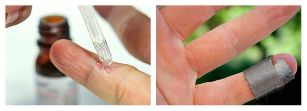
Chemotherapy
Colloidal milk-salicylate and salicylic patches are used to get rid of the wart. The percentage of drugs and how they are used (long-term wear of patches, applications, etc. ) depends on the prevalence and location of the tumor.
Solutions of zinc and 2-chloropropionic acid may also be used. In this case, a chemical composition is applied to the pre-treated surface, which is left on the wart until it changes color (depending on the type of wart). The procedure is repeated several times after 7, 14 and 21 days. Before each procedure, the tissue is removed mechanically.Another chemical method is a combination of nitric, acetic, oxalic, lactic acid and copper nitrate trihydrate. In this way, only relatively small tumors are treated - up to 5 mm. The solution is also allowed to change the color of the wart. After 3-5 days, the patient comes for the next appointment, if necessary, he is prescribed a second procedure in 1-4 weeks.

Cryodestruction
This method consists of freezing the wart with liquid nitrogen: the wet tampon is pressed against the damaged skin (by trapping the surrounding tissue by a few mm) for 1-5 minutes. Some lesions require multiple treatments over four weeks to destroy
The main disadvantages of cryopreservation are pain and delayed effect compared to other methods, in which only one procedure is often sufficient for removal.
Electrocoagulation
Under the influence of an electric current, the tuber is removed in layers. Such an operation is performed with a local anesthetic.
This method is more effective than cryopreservation, but has one major drawback: electrocoagulation often leaves scars at the site of wart removal. For those patients seeking correction of a cosmetic defect, 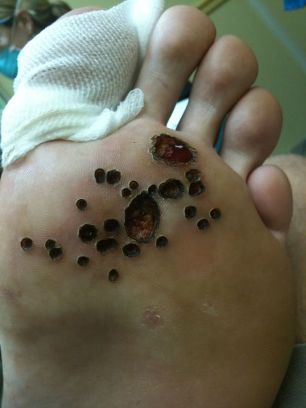 this method will not be the most appropriate.
this method will not be the most appropriate.
Laser destruction
The laser also removes warts in layers. The light guide comes in contact with the skin from a few seconds to three minutes, depending on the size. The resulting spot is then cut off and the bottom of the wound is treated again with a laser. The patient is then taught how to handle the wound. The operation itself is performed under the influence of local anesthesia.
Radio wave surgery
Radiofrequency surgery is one of the most modern and gentle methods for removing certain benign tumors, including warts.
The method is based on the production of electromagnetic waves with different frequencies: from 100 kHz to 105 MHz. During the process, the tissues resist the passing waves, so the molecular energy is released into the cells, which heats the skin. Under the influence of heat, the cells really evaporate - a neat cut is achieved. At the same time, no mechanical forces are exerted on the affected tissue.
Advantages of this method:
- security,
- rapid wound healing,
- good cosmetic result - scars and scars are excluded.
- relative pain - local anesthetic applied before mini surgery,
- block secondary infection due to automatic electrode disinfection when the device is switched on.
The effectiveness of this method is recognized worldwide, however, it is rather difficult to find a clinic that uses the radiosurgery method.
Which treatment method to choose
All of the above methods have many disadvantages:
- For the first two weeks, the surgical site looks unattractive - crusty, dark tissue. This should be taken into account if the warts are located on visible parts of the body (for example, on the face).
- Unpleasant odor and some degree of pain during surgery.
In addition, each of these methods has contraindications, which you should learn about in a preliminary consultation with a dermatologist.
But the main disadvantage isthere is a high probability of recurrence, especially if the warts were extensive, extensive. With each of these methods, doctors do not fight the root cause of the disease, but its consequences, from todayThe human papillomavirus cannot be cured.
Therefore, the treatment is aimed at:
- or the destruction of tumors appearing at the site of introduction of the virus,
- or to stimulate an antiviral immune response;
- or a combination of these approaches.
Childhood is usually not a contraindication to surgery. Therefore, many of them (including radio wave surgery) are also used to treat warts in children. An exception is the chemical removal of warts due to the possibility of side effects in the substance.
What to do after
After any of these procedures, be sure to follow your doctor's recommendations.
After removing the tumor by any of the methods presented, the doctor usually prescribes treatment for the removal site. It is forbidden to remove the "crust" yourself, the moisture of the wound and its exposure to direct sunlight.
If the patient is constantly suffering from warts, then they should consult an immunologist - they may require medication, which will increase the immune resistance to the manifestations of human papillomavirus.
Prediction. Prevention
If the patient does not have immunodeficiencies, then the warts may go away on their own, but this will take a long time - from several months to several years. Thus, in 65% of cases, the warts subside independently within two years. If after two years the tuber is still in place, it is recommended to remove it. Immediate removal of multiple increments is recommended.
With normal immunity and a well-chosen removal method (depending on the size and type of warts), it is possible to remove the pathogenic tissue and achieve a good cosmetic result. With reduced immunity and other predisposing factors, the remaining human papillomavirus in the body causes relapses.
There is no specific disease prevention. But is infection so inevitable?
You can reduce the chance of a virus by following a few rules:
- Avoid walking barefoot in public places where there is a possibility of skin injury and viral infection (swimming pools, public showers, gyms).
- Choose quality shoes, change them often. Try to keep your feet dry. Heat and humidity are excellent breeding grounds for the human papillomavirus.
- To avoid ants, only go to a certified nail technician and make sure they use sterile tools.
To prevent genital warts, according to the WHO (World Health Organization), a quadrilateral vaccine against human papillomavirus is also extremely effective. No vaccines are currently available to prevent other types of warts.
If you find a wart, then do not try to cauterize, cut or cut it - this way you can contribute to the inflammation and further spread of the virus along the skin. After such a "removal", instead of a wart in the morning, you can wake up with ten.














































































